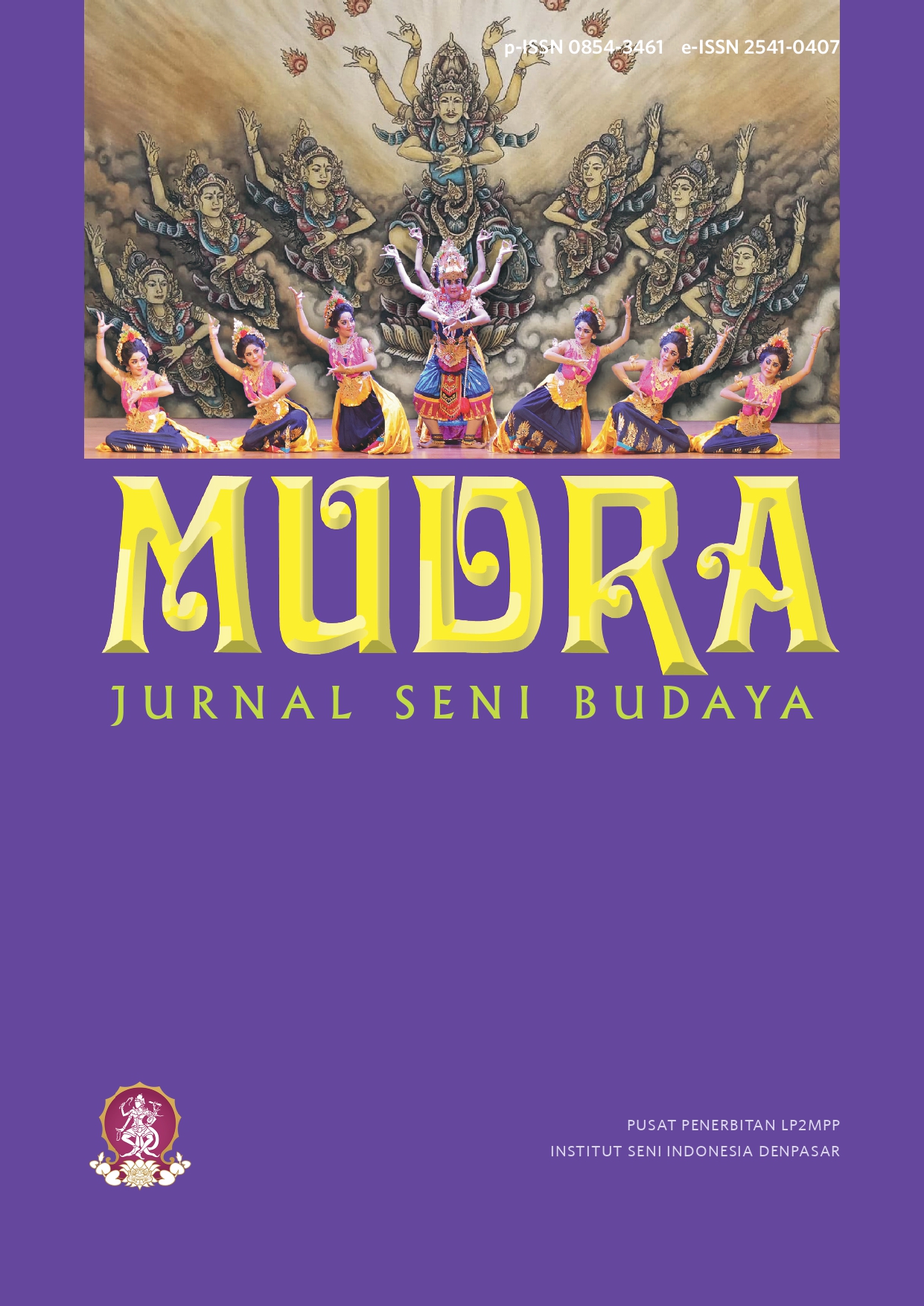Recognizing the Character of Children with Special Needs Through Digital Motif Design Using the Visual Language Method
DOI:
https://doi.org/10.31091/mudra.v40i2.3081Keywords:
Children with Special Needs, Visual Language, Digital Motif Design, Visual ElementsAbstract
Every individual, including children with special needs, possesses creative potential that can be continually developed. This creativity is often expressed through visual media, such as images, which serve as a means of communication to convey messages, emotions, and thoughts. However, children with special needs often face unique challenges in expressing themselves, such as difficulties with verbal communication, limited motor skills, and cognitive barriers. Therefore, an inclusive and adaptive approach is essential to ensure that these children can fully express their creativity. One promising method for fostering creativity is the use of digital technology, such as Adobe Photoshop, to create digital motif designs. Through digital motif design, children with special needs can not only express themselves visually but also explore various shapes, colors, and compositions without limitations. This research aims to analyze digital motif works created by children with special needs using a visual language approach. The focus is on the objects depicted (wimba) and how they are arranged within a field (tata ungkap). Through this research, we hope to identify the personality traits of children with special needs through the interpretation of their digital motif designs. This analysis may also support the classroom learning process, provide stimulation, and enhance motivation. As a result, children’s communication, emotional expression, and abilities can be further explored. The findings of this research indicate that the use of digital media facilitate creative expression in a more inclusive and adaptive way. Thus, the artworks produced by children with special needs are not only unique and interesting but also reflect their ability to adapt and innovate despite challenges.
Downloads
References
. Davido, Roseline. (2012). Mengenal Anak Melalui Gambar. Jakarta: Salemba Humanika.
. Tabrani, Primadi. 2014. Proses Kreasi - Gambar Anak - Proses Belajar. Bandung: Erlangga.
. Nagara, Martien Roos. (2022). Proses Kreativitas pada Gambar Anak Usia Dini di TK A Santo Yusup II Bandung. Jurnal Rupa, 7(1), 19-29. DOI: https://doi.org/10.25124/rupa.v7i1.4308
. Gardner, H. (2011). Frames of Mind: The Theory of Multiple Intelligences. Basic Books.
. Tobroni, M. I. (2013). Menggali Kreativitas Seni pada Anak Berkebutuhan Khusus. Humaniora, 4(1), 221-227 DOI: https://doi.org/10.21512/humaniora.v4i1.3432
. Perangin-angin, D. A. K., & Nagara, M. R. (2024). A Language of Children with Disabilities in Digital Pattern Design. Mudra Jurnal Seni Budaya, 39(2), 158-166. DOI: https://doi.org/10.31091/mudra.v39i2.2696
. Jones, S. (2018). Creative Expression and Disability: Unlocking Potential Through the Arts. Journal of Disability Studies, 12(3), 45-58.
. Malchiodi, C. A. (2018). Art Therapy and Creative Approaches for Children with Special Needs. Routledge.
. Loveless, A. (2007). Creativity, Technology, and Learning: A Review of Recent Literature. Futurelab.
. Peppler, K., & Keune, A. (2019). Creativity in the Digital Age: Supporting Learning Through Design and Making. Journal of Digital Learning in Teacher Education, 35(1), 4-8.
. Nagara, M. R. (2023). CREATIVITY AND LEARNING PROCESS IN VISUAL LANGUAGE OF EARLY CHILDHOOD. Cultural Arts International Journal, 3(1).
. Hanisha, F., & Djalari, Y. A. (2018). Bahasa Visual, Gambar Anak, dan Ilustrasi Pada Buku Cergam Anak. Jurnal Seni dan Reka Rancang: Jurnal Ilmiah Magister Desain, 1(1), 63-82. DOI: https://doi.org/10.25105/jsrr.v1i1.3878
. Fauzan, H. N., Francisca, L., Asrini, V. I., Fitria, I., & Firdaus, A. A. (2021). Sejarah pendidikan anak berkebutuhan khusus (ABK) menuju inklusi. Pensa, 3(3), 496-505.
. Arnheim, R. (2004). Art and Visual Perception: A Psychology of the Creative Eye. University of California Press.
. Tabrani, Primadi. 2012. Bahasa Rupa. Bandung: Kelir.
. Marschark, M., Tang, G., & Knoors, H. (Eds.). (2015). Bilingualism and Bilingual Deaf Education. Oxford University Press. DOI: https://doi.org/10.1093/acprof:oso/9780199371815.001.0001
. Knoors, H., & Marschark, M. (2014). Teaching Deaf Learners: Psychological and Developmental Foundations. Oxford University Press. DOI: https://doi.org/10.1093/acprof:oso/9780199792023.001.0001
. Smith, J., & Smith, A. (2018). Creative Expression in Children with Special Needs. Journal of Art Therapy, 34(2), 45-60
. Johnson, R. (2020). The Symbolism of Shapes in Visual Communication. Journal of Visual Studies, 15(2), 45-60.
. Lee, H., & Park, J. (2019). The Psychology of Color in Digital Art. Journal of Art Therapy, 34(2), 45-60.
. Brown, L. (2021). Digital Tools in Art Education for Children with Special Needs. International Journal of Art and Design Education, 39(3), 123-135.
. Kim, S., & Jung, K. (2021). Neural Sequence-to-Grid Modules for Learning Symbolic Rules. arXiv preprint arXiv:2101.04921. DOI: https://doi.org/10.1609/aaai.v35i9.16994
. Perangin-angin, D. A. K., & Nagara, M. R. (2024). PENGEMBANGAN KONSEP DAN PEMBUATAN DESAIN MOTIF DIGITAL KARYA ANAK BERKEBUTUHAN KHUSUS DI SLB PANGUDI LUHUR JAKARTA BARAT. Prosiding ISBI Bandung.
. Desi Ningrum, D. R. (2017). Psikologi anak berkebutuhan khusus.
. KP, D. A., & Nagara, M. R. (2024). ANALISIS BAHASA RUPA DESAIN MOTIF ANAK BERKEBUTUHAN KHUSUS PADA PENGEMBANGAN KONSEP DIGITALISASI. Book Chapter ISBI Bandung.
Downloads
Published
How to Cite
Issue
Section
License
Copyright (c) 2025 Dede Ananta, Martien Roos Nagara

This work is licensed under a Creative Commons Attribution-NonCommercial-ShareAlike 4.0 International License.
- Copyright on any open access article in a journal published by Mudra Jurnal Seni Budaya is retained by the author(s).
-
The Creative Commons Attribution License 4.0 formalizes these and other terms and conditions of publishing articles.









